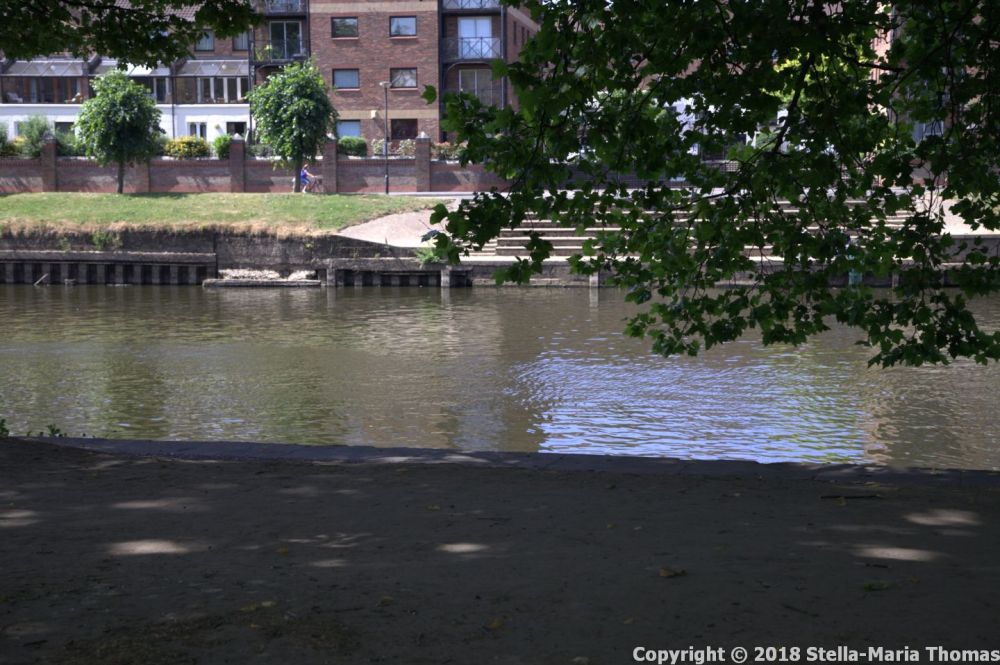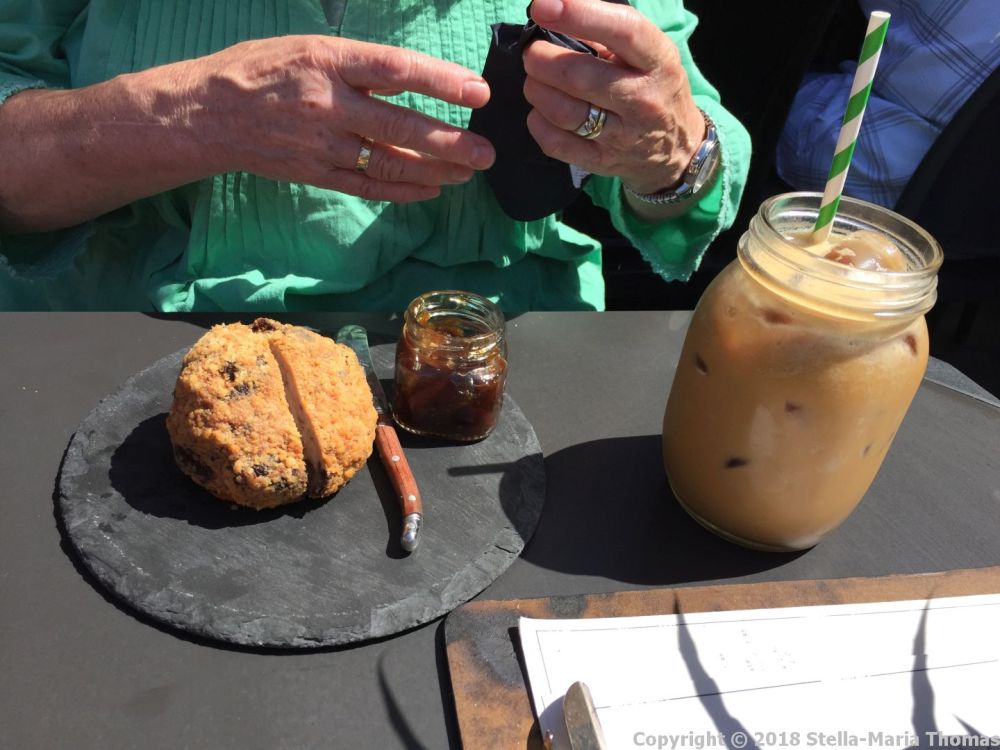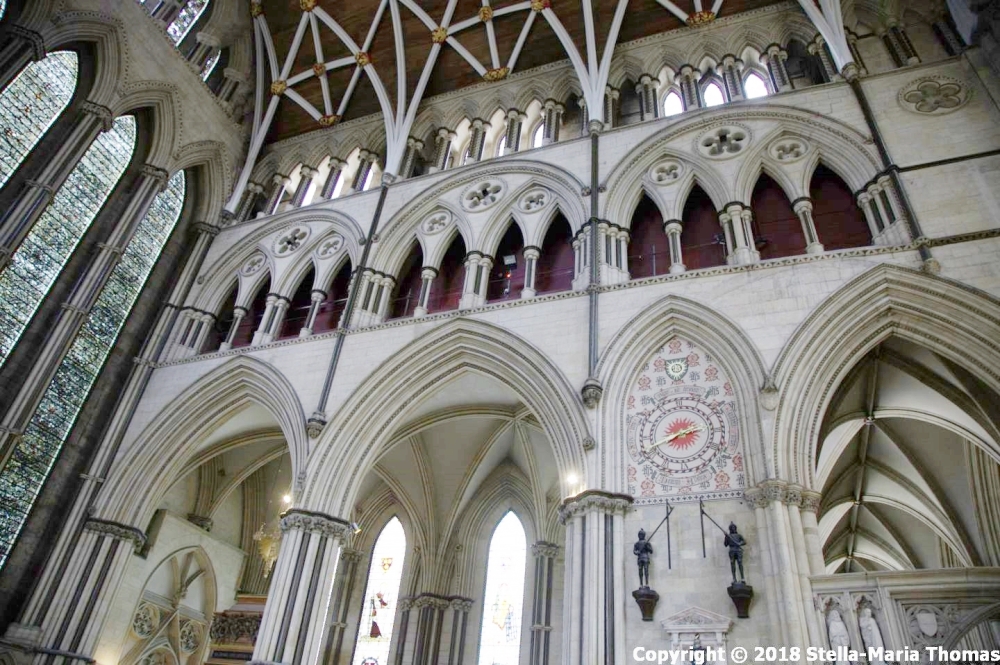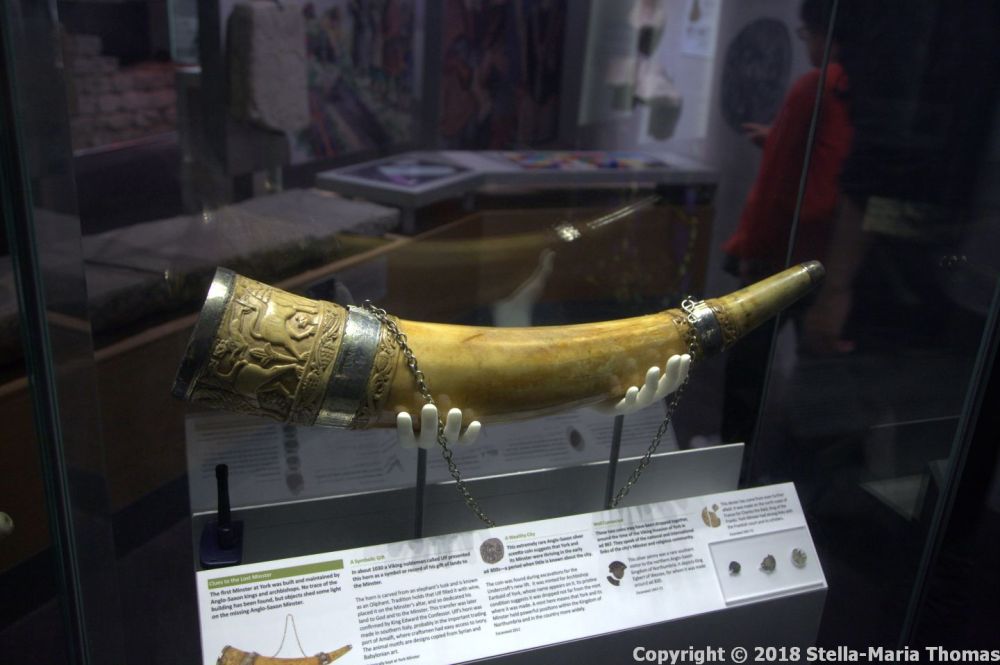Friday, 6th July 2018 – York
With the lure of Europe’s first pop-up Shakespearean theatre, the Rose, to tempt us north to York, we decided it was a good excuse for a short break in a city I used to know well after numerous trips there with school or for that matter with my parents. A day’s holiday was booked from work, and on Friday morning we set off just after the rush hour had died down, making good progress apart from a weird traffic jam on the A64 that meant we took a triangular detour to avoid sitting in a queue for 10 minutes, coming back on to the same road 2 miles further down on the other side of the jam.
We considered dumping the car in one of the park and ride car parks on the outskirts, but then decided we’d hold that in reserve for later if we couldn’t actually park in the city. As it turned out there was a handy car park very close to our hotel, so we dumped the car there and set off to nose around the city, possibly with intent to take a river cruise. We had, purely by chance, fetched up right by the river bank and very close to Clifford’s Tower. We decided we’d wander along the riverside first of all. The Ouse at this point is key to a large part of York’s long history.

Although there seem to have been people settled here between 8000 and 7000 BC, the area was later settled by the Brigantes, who were there when the Romans arrived in 71 AD, aiming to settle the are after the Brigantes took a hostile approach to being a client state. The Ninth Legion was sent north of the River Humber to pacify them, leading to the construction of a wooden military fortress on flat ground above the River Ouse, close to its confluence with the Foss. The fortress was later rebuilt in stone and was large enough to house 6,000 soldiers. The site of the principia is under York Minster, and excavations in the undercroft have revealed part of the Roman structure and columns. The Romans stuck around with Constantine the Great (he of much influence in Trier as we discovered last year) being proclaimed Emperor here in 306 AD.

Somewhere around 207–211 AD, Emperor Severus proclaimed York capital of the province of Britannia Inferior, but in later centuries, probably due to repeated flooding (a problem that still plagues the town) the population shrank, and didn’t really revive until King Edwin of Northumbria made York his main base, the first minster church being constructed to host his baptism in 627. St, Peter’s School, founded in 627, hosted Alcuin of York, before he went on to be Charlemagne’s leading advisor on ecclesiastical and educational affairs.

In 866 the Vikings raided and captured York, developing the city into a major river port, a key part of their trading routes throughout northern Europe. The last ruler of Jórvík, Eric Bloodaxe, was driven from the city in 954 AD by King Eadred. In 1068, two years after the Norman conquest of England, York rebelled, only to be forcefully put down by William the Conqueror who built a wooden fortress on a motte close to the river. A year later, after further trouble, a second castle was built on the other side of the river. Both of them were destroyed in 1069 and rebuilt in stone during what came to be known as the Harrying of the North. The first stone minster church was also badly damaged around this time, and so a minster was built on a new site, and around 1080, Archbishop Thomas started building what became the current Minster.

However, we also figured it might not be a bad idea to try and source a light lunch somewhere. That turned out to be remarkably easy. At the end of the Gothic Revival-style Skeldergate Bridge is an old toll house, known as the Motor House which used to house the engine that would raise the bridge to let tall ships through. Now it contains Dyls, a café bar on several levels including a riverside terrace overlooking the River Ouse that was bathed in sunshine when we arrived. We grabbed a table right by the water, and set about ordering from the tiny bar on the first floor.

It will come as no surprise to you, I’m sure, to know that the iced lattes were served in jam jars. They were also good and very refreshing on another hot, sweaty day.

Lynne thought she’d avoid a big portion by ordering a scotch egg with caramelised onion chutney, but she’d overlooked the fact that we were in Yorkshire, where they don’t really do small portions!

I went for the zingy Thai prawn salad, which had peanuts scattered through it, plenty of leaves, and some lovely, tasty tomatoes, as well a courgettes spiralised into Thai noodle thinness. The dressing packed a sweet/sour punch and was indeed zingy. I couldn’t finish it all though I did managed to eat all the prawns.

Before leaving we enquired what time they stayed open till, and made plans to return for aperitif before dinner in the evening. From there we walked a little further along to see what the score was with the boat trips. It seemed they were running every half hour from King’s Staith, which was once the main landing point for ships coming into the city, back in the day when it was the second busiest inland port in the country after London.

A quick scoot to the nearest bank machine to get some cash and we settled in on board for a 45 minute pootle along as far as the railway bridge and then back in the other direction, the captain providing a running commentary on what we were seeing. We enjoyed a glass of wine in the sun and watched the world go by, enjoying the stories and some, though not all, of the varied architecture along the way.

The York Guildhall is a lovely building, dating back to 1445, another period of prosperity for the city, though it has been extensively reconstructed and restored after being heavily damaged in the second World War in what were known as the Baedeker raids.

The Viking hotel (now a Park Inn) on the other hand is not, being a nasty piece of 1960s concrete vandalism perpetrated on an innocent and undeserving water front.

A short cruise later we hung on and decided we’d disembark at Lendal Bridge rather than at our starting point at Kings’ Staith. Lendal Bridge is probably the most elegant of York’s bridges, and when it opened in 1863, replaced a ferryman, who was apparently compensated for the loss of his job with a horse and cart and the sum of £15, which was not a bad payoff for the times.

Jumping off where we did landed us right next to the Two Hoots Ice Cream boat at the foot of the Yorkshire Museum gardens. An ice cream seemed like an excellent idea, so we bought a scoop each and lurked in the shade of the trees in the Museum Gardens while we ate it. The gardens are lovely, and surround the museum. They were pretty much full of people enjoying the weather, but a weird screeching noise was coming from somewhere closer to the building. We set off to investigate and found a display of owls and other birds of prey, where you could pay money to hold one or two of the birds. They included a cute but cross looking burrowing owl.

We declined the offer to hold any of the birds, but made a donation to the charity in return for some unexpected information, and a chance to examine them up close and take a load of pictures. The Harris hawk in particular was fancying its chances of taking down a pigeon, if only they would unfasten its jesses.

We had a quick nose around inside the museum, but decided we really didn’t have time to do it justice if we wanted to take a thorough look at the Minster and start a bus tour, as well as check in to our hotel/apartment on time. We made a note to come back if we had time later, instead making our way through the gardens and on to the street leading to the Minster, or the Cathedral and Metropolitical Church of Saint Peter in York as it’s more formally known.
Time was you could just wander into such places free of charge. Now it varies. Salisbury earlier this year suggested a contribution, Chichester was completely free of any suggestion or hint, whereas unless you’re on your way to a service in York, you will be charged for entry. We coughed up and were handed a somewhat cursory brochure that really didn’t cover all the things we could see in any detail at all. However, there is much to enjoy inside what claims to be the largest Gothic cathedral north of the Alps and the Pyrenees (Cologne Cathedral also makes this claim).

The previous church was damaged in 1069 during William the Conqueror’s harrying of the North, but was repaired by the first Norman archbishop, Thomas of Bayeux a year later. Five years later the Danes arrived and destroyed the rebuilt church, and so the locals had to start again in 1080. Built in the Norman style, out of magnesian limestone from Tadcaster, the Minster is 524.5 feet (159.9m) long, with its central tower (235 feet high (72 m)) standing tall over the rest of the town after a by-law was passed to the effect that nothing taller could be built in the town. Oh, and it’s called a minster because it was a missionary teaching church, with a monastery attached. The interior and exterior show the development of the Gothic style over the course of its construction, the work that is visible having started in 1230 (Early English style) and been completed in 1472 (Perpendicular Period). Arguments over size apart, it’s a magnificent building, all soaring pillars, vaulted ceilings and lovely carving.

It’s also, as previously mentioned, slap bang on top of the original Roman fort, parts of which can be seen in the undercroft, having come to light in the 1960s when it was discovered that the building, particularly the tower, was in danger of collapse and in urgent need of restoration, a phase I remember well from my childhood just 30 miles away. £2,000,000 was raised and spent by 1972 to reinforce and strengthen the building foundations and roof. During the excavations that were carried out, remains of the north corner of the Roman Principia were found under the south transept and now form a splendid display of the history of the building and of the repair work.

The undercroft also contains this rather wonderful carving of the damned, burning in the firs of hell, with all sorts of interesting details, which would have helped get the message through to a congregation most of whom could not read!

There is quite a lot of very fine early medieval art down there, and I did find myself getting quite cross with the party of young Japanese tourists who took photos using their phones with the flash on of this:

Don’t. Just don’t. Turn the flash off or do without a photo. It’s the same as the idiot in Krakow taking a photo of the Lady with an Ermine (or ferret if you’re feeling faintly silly). It’s survived all these years by being preserved from bright light, so don’t be so selfish, preserve the work for another century, and turn the damn flash off! They seemed a bit surprised but they did turn of the flash, and then scarpered out of there pretty quickly.

The nave is claimed to be the widest Gothic nave in England, leading us down to the Great East Window (finished in 1408), the largest expanse of medieval stained glass in the world, and the Great West Window, known as the ‘Heart of Yorkshire’ (constructed in 1338).

In the south transept is a rose window whose glass dates from about 1500 and commemorates the union of the royal houses of York and Lancaster. On 9 July 1984 a fire, probably the result of a lightning strike, took out the roof and it was only the strenuous efforts of the firefighters that saved the Rose Window. Water was pumped from the Ouse and crews worked for hours to try and save the south transept roof to no avail. The resulting renovation cost £23 million.

The Chapter House was begun in the 1260s and was completed before 1296. It’s relatively unusual in having no central pillar, unlikely many, the roof being light enough not to need one. What it does have are dozens of sculptured heads of men and animals, no two alike, some pulling faces.

Finally there is the Kings Screen, a striking 15th century choir screen that contains sculptures of the kings of England from William the Conqueror to Henry VI and is a fabulous thing.

After we’d completed our nose around inside the Minster (which occupied us for over an hour), we scooted outside having realised we were running out of time. We wanted to get started on the Hop On, Hop Off bus tour, using the discount from the river cruise ticket (you get £1 off) and we knew that there was a stop near our hotel and close to the car park so we could get sorted and check in. The buses run every 12 minutes in July so we didn’t have long to wait for the next one, as we hung about outside Monk Bar (all the gates of the city are called something -Bar, many of the streets end in -Gate from the Old Norse Gata that still shows up in a great many northern towns, as well as all over Scandinavia too, just to be confusing for you all).

We covered a few stops back to where we needed to be, but failed to push the button to get off at the right stop and so ended up having to walk a bit further than we’d wanted to in that heat. We would complete the tour in the morning, as the tickets are valid for 24 hours. We had intended to go and find the hotel first and then move the car but as we were now pushed for time we drove round to the Staycity (a late substitute after our selected AirBnB cancelled on us with no word of apology or explanation), arriving to discover a somewhat basic establishment, though in a good location. We also noted an alarming number of hen parties which didn’t bode well for a quiet night’s sleep. The location and the friendliness of the staff were in its favour; it remained to be seen if anything else would be. We unpacked, showered and headed back out in pursuit of dinner.

















































































































































































































































































Nice succinct history lesson. I generally avoid York because of the crowds and the cost of car parking. I also always resent paying to go into a church but I suppose they have got to raise the renovation costs from somewhere. The National Railway Museum in York is free!
LikeLike
True. I was surprised how easy it was to park, and I think we got our money’s worth out of the Minster. I’m just stunned at how expensive it is generally to be a tourist in the UK.
LikeLike
York is so expensive (except for the Railway Museum) I prefer to take visitors to Beverley and the Minster there. Lincoln is the same, just a little cheaper than York at a bargain (?) £8. I went to Barcelona last month, Cathedral entrance (not Sagrada Familia) was free! In London CoE Westminster Abbey is a massive £20, nearby Roman Catholic Westminster Cathedral if free. I might consider conversion!
LikeLike
Yes, I was amused by the commentary on both the boat and bus trips pointing out that the Railway Museum had a Yorkshireman’s favourite charge, as in it was free. As a Yorkshirewoman, however, I have to dispute the stereotype of tight fistedness.
LikeLike
I have always found the people of Yorkshire to be most generous!
LikeLike
This brings back happy memories. I lived in York when I was a student, which was long enough ago that you could walk into the Minster for free. It’s such (in the main) a lovely city, but it does have some cracking examples of post-war architectural monstrosities. On the up side, the food seems to have improved!
LikeLike
Enjoyed reading your in-depth tour of your first day in York. Thanks for bringing it to my attention Stella.
LikeLike
I am flattered that you liked it. Thank you!
LikeLiked by 1 person